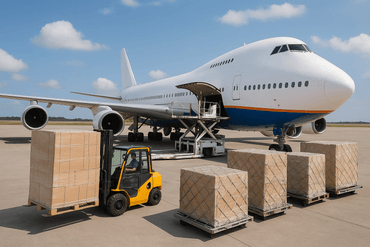
Shipping To Spain From USA: 5 Things to Know



When importing to Spain from the United States one has to ensure that their documentation is correctly done. Despite the cordial relationship between these two developed economies, there are very specific regulations to doing business that helps each country maintain their mutually beneficial relationship.
Here are the top five specific things to keep in mind when shipping to Spain from the United States:
1. Correct documentation
The documentation has got to be correct according to both the recipient and the sender country. Make sure the import documentation is in order. An importation commercial invoice should be attached to the shipment to avoid encountering issues with customs clearance. The invoice should always be complete with the correct descriptions of the products being shipped.
The description should answer the three basic questions required by customs: what is in the shipping container, what is the use of the items and the materials used on products. The invoice should also give the true reflection of the value of the goods being shipped. Spain doesn’t place any barriers like quotas on products manufactured in the States, but incomplete invoices usually incur high demurrage charges. Also, make sure the products do not need any certification or approvals from the Spanish side otherwise the shipment will encounter long delays.
2. Choose a reliable incoterm
Incoterms, also known as International Commercial Terms, are a series of commercial terms from the international chamber of commerce. These terms inform of the obligations, risks and costs between a buyer and a seller, but they do not govern contract law. Incoterms are used a lot in international commercial transactions.
It is crucial that incoterms be acceptable to all parties involved to avoid misinterpretation. For buyers or sellers in Spain transacting business with partners across the pond in the United States the best Incoterms are FOB (Free on Board), DAP (Delivered at Place), and EXW (Ex Works).
FOB
Under this Incoterm, the seller leaves the goods at the source port when they are ready for shipping. The seller also takes care of all the paperwork and formalities. The buyer takes care of choosing the shipping services and pays for all the expenses and delivery of the cargo to its final destination. This incoterm is favorable to buyers/importers because it gives you complete control over the whole process.
DAP
This is the cheapest Incoterm option for any international trading partners. DAP is an option between partners who are starting to do business together because it has very few risks and responsibilities. However, one doesn’t have control over the shipping process, and this may end up costing more financially than one would like to spend. The risk is more for the buyer than for the seller.
EXW
This is the most complicated option because not only should the freight forwarder handling the cargo be present in the receiving country, but they must be conversant with the importation laws of the country. Avoid this Incoterm if one can’t meet the above criteria.
3. Choose the right freight forwarder
Assess the freight company’s reputation, credentials and experience. The credentials prove that the forwarder is qualified and certified to conduct business, the experience shows that they understand the scope of the task and the reputation shows that people trust their services.
Even though the freight forwarder has a responsibility for the cargo they carry, ultimately, it’s the buyer’s responsibility to answer to customs about the cargo.
4. Prepare for uncertainty and other hurdles
Some of the issues that come with moving cargo around are uncertainty of the truckers, break downs of vehicles and additional freight costs because of weather or high peak seasons. These are all problems that one has to prepare for in advance by increasing their budget allocation, shipping during low peak seasons, or using other means of transportation over road.
One can also choose to ship the cargo over long periods which may be inconvenient but cheaper eventually. This may circumnavigate issues like problems with truckers. Planning in advance is the best way to mitigate any arising problems or find a solution for them beforehand.
5. Keep the package simple
Strive to keep the package simple so that it doesn’t encounter any problems at customs. It’s recommended not to place too many assorted items made from materials in the same package as one has to describe every item in the package. The invoice description needs to describe in detail what is inside the package and having too many assorted items inside can make it confusing for the customs officials.
Remember that in Spain the invoice documentation must be properly detailed and labeled, and any discrepancies will cause delays to the shipment being delivered.
Shipping to Spain from the U.S. doesn’t have to be difficult, so long as one sticks to the best practices discussed in this article. Good luck!
Related Articles


